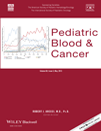Assessment of potential bias from non-participation in a dynamic clinical cohort of long-term childhood cancer survivors: Results from the St. Jude lifetime cohort study†
Conflict of interest: Nothing to report
Abstract
Background
To evaluate long-term health outcomes among childhood cancer survivors, St. Jude Children's Research Hospital (SJCRH) has established the St. Jude Lifetime Cohort Study (SJLIFE), comprised of adult survivors who undergo risk-directed clinical assessments. As in any human research study, SJLIFE participants are volunteers who may not represent the source population from which they were recruited. A lack of proportional representation could result in biased estimates of exposure-outcome associations. We compared available demographic, disease, and neighborhood level characteristics between participants and the source population to assess the potential for selection bias.
Procedures
Potentially eligible patients for SJLIFE were enumerated as of October 31, 2011. Data from electronic medical records were combined with geocoded census data to develop an analytic data set of 3,108 patients (the evaluable source population) of whom 1,766 (57%) underwent clinical assessment (participants). The ratio of relative frequencies (RRFs) for characteristics was compared between participants and the source population, where RRF = 1.0 indicates equal frequency of the characteristic.
Results
Participants and the source population had similar frequencies for most characteristics. Characteristics with modest relative differences (RRFs between 0.86 and 1.11) included sex, distance from SJCRH, primary diagnosis, median household income, median home value, and urbanicity.
Conclusions
Our results indicate a lack of substantive differences in the relative frequencies of demographic, disease, or neighborhood characteristics between participants and the source population in SJLIFE, thus alleviating serious concerns about selective non-participation in this cohort. Bias in specific exposure-outcome relations is still possible and will be considered in individual analyses. Pediatr Blood Cancer 2013; 60: 856–864. © 2012 Wiley Periodicals, Inc.




